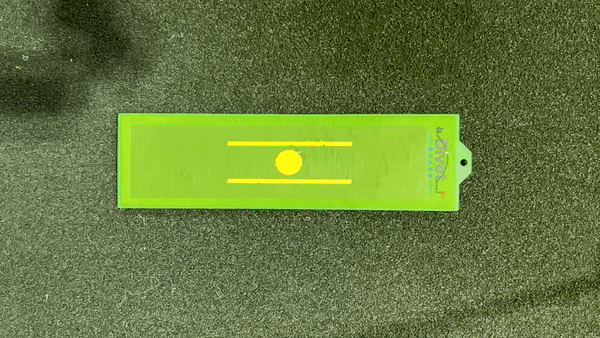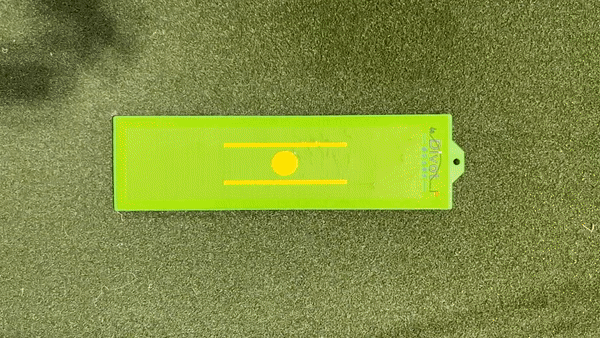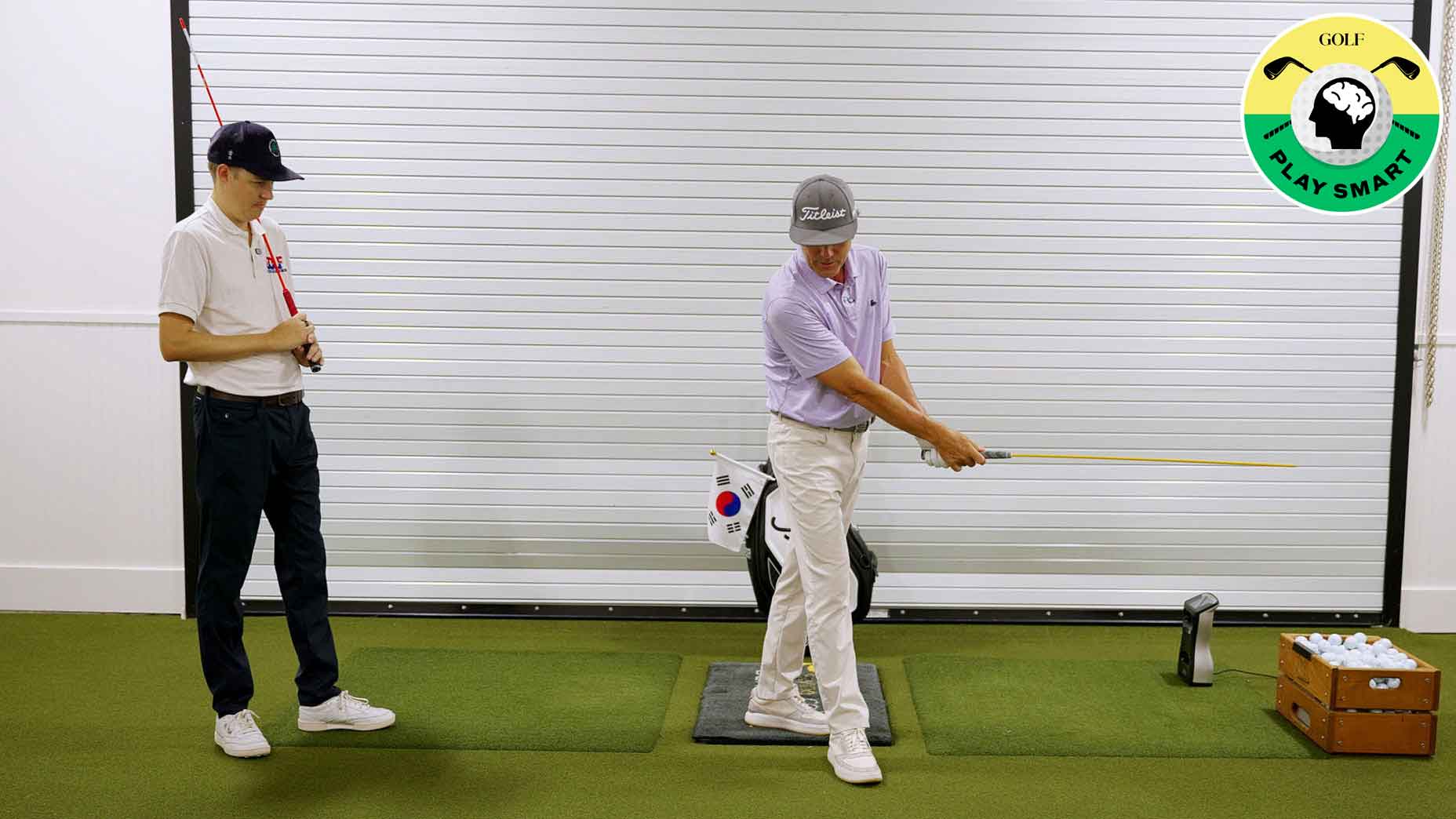Welcome to Play Smart, a game-improvement column that drops every Monday, Wednesday and Friday from Game Improvement Editor Luke Kerr-Dineen (who you can follow on Twitter right here).
Through some combination of weirdness and nerdiness, I tend to get deeply fascinated by some rather obscure topics. Last year, I dove down a rabbit hole on the concept of practicing — without a golf ball.
Sounds strange, I know, but there’s actually an ever-growing body of evidence that suggests that it’s the best way of practicing certain things, especially your technique. When you’re adjusting your golf swing, you’re not necessarily doing it to hit the next ball better. It’s more of a future investment in the golf balls to come. And the problem is, hitting bad shots while you work through an awkward change can distract from that goal. When you’re changing your technique, you’re better off making lots of swings without a golf ball. Just ask Will Zalatoris.
Which is why the Divot Board trainer caught my eye as an interesting idea when it showed up on my doorstep the other day. I gave it a quick try, and came away not just thinking it was an interesting idea, but a clever one that can actually help golfers get better.
Before we go any further a disclaimer: I get sent a lots of training aids (my wife isn’t thrilled about it), and I don’t need to write about any of them. I only write about the ones I like. I like this one! Here’s why.
You can get pretty far in golf learning to do three things well: Hitting the ball before the ground, keeping your clubface relatively square, and your swing path (AKA, the direction you swing the golf club) in a pretty neutral spot. That won’t turn you into a pro overnight, but getting to a point where you can do those three things consistently can easily get you breaking 80.
But back to our earlier point, it’s not always easy to know if you’re doing those things well when you’re hitting a golf ball. That’s where the divot board comes in. The yellow circle represents the golf ball, and the train track lines the swing path. The goal is to make a swing and hit the yellow circle first, and send the club through the two lines. If you don’t do it, you’ll be able to tell immediately based on where the divot is.
Like this. Notice how the divot is going to the right, and starts behind the ball? That means you’re swinging too far from in-to-out and behind the ball, so you’re probably hitting a variety of chunks, drop kicks and hooks.

On the other end of the spectrum, here’s a classic slicer move. The club is going from out-to-in (over the top), which means you’re probably hitting pulls and slices.

You won’t be able to get minute details of your golf swing doing this, but that’s not really the point. It’s to give you a general sense of how your golf swing is moving, and to help you self-correct in a gamified way, without having to think too much about it. Your golf swing will be a lot better off because of it.










